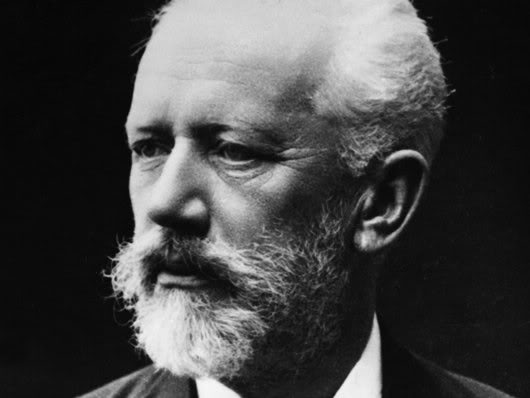|
||
|
Pyotr Tchaikovsky was born in Kamsko-Votkinsk, on the 7th of May 1840, and was the second of six children. He began attending the St. Petersburg School of Jurisprudence in 1850. His first appointment was a clerk in the Ministry of Justice. In 1863 Tchaikovsky left his job in the ministry to study music full time at the St Petersburg Conservatory. Anton Rubenstein, the director of the conservatory, encouraged him to study everything including conducting. However Tchaikovsky was terrified of facing an orchestra (even later in life). He said that he feared his head would fall from his shoulders, and always conducted with his left hand holding his chin - just in case. Graduating in 1866 he joined the staff of the Moscow Conservatory, where he was to remain for nearly twelve years. His first major compositions, including the Little Russian Symphony, date from this period. The name "Little Russian" refers to Ukraine. Tchaikovsky had worked on the symphony during his summer holiday in 1872 at Kamianka in Ukraine where his sister Aleksandra and her family had a country estate. During his visits he was able to learn something of the local music. The story goes that the elderly butler of the estate - Peter Gerasimovich - sang the folk-song "The Crane" to Tchaikovsky and thus inspired him to write the final movement of the symphony. Two other Ukranian folk songs are incorporated in the first and third movements. Tchaikovsky frequently related an incident that occurred as he was travelling back to Moscow with the manuscript sketches of the symphony. Dissatisfied with the slow service he was getting at a coach stop he told the postmaster that he was Prince Volkonsky, a gentleman of the Emperor's entourage. This did succeed in getting the coach moving quickly, but perhaps too quickly, because on reaching the evening destination he discovered that his luggage, including the manuscript, had been left behind. He immediately sent a messenger back to fetch it, but the cautious postmaster refused to release it to anyone but the prince himself. Tchaikovsky was forced to retrace his steps to recover his manuscript, fearful that the postmaster might have opened his luggage and discovered the fraud. When he did recover the luggage he was relieved to see that it had not been opened, and thanking the postmaster asked him his name. The reply was "Tchaikovsky". The composer immediately assumed that this was a joke at his expense, but on further enquiries he discovered that the postmaster's name really was Tchaikovsky. The symphony opens with a solo horn playing a Ukrainian variant of the tune "Down by Mother Volga". This simple, beautiful melody appears again at the close of the movement, and is intertwined with other musical ideas in the symphonic development. The main body of the movement is based on a short fast fleeting motif, which is used in many different ways, creating a restless troubled mood. Tchaikovsky shows his mastery of form and structure, taking the music through remote keys, and developing the motivic ideas as the movement progresses. After the final restatement of "Mother Volga" it closes in a way that expresses uncertainty and doubt. The second movement is a complete contrast. It is a jaunty march with a humorous and appealing tune, very much reminiscent of some of Tchaikovsky's ballet music. It was originally sketched as a bridal march for his opera Undine, which was never published. The movement is in binary form, and the central section contains another Ukrainian folk tune "Spin, O My Spinner": a simple lyrical melody beautifully and delicately arranged. The third movement is a scherzo and trio. The scherzo is full of energy and drive, with fleeting melodic fragments tossed around the orchestra, and dramatic contrasts of dynamics. The trio section uses a simple catchy melody strongly suggesting folk music, though it is believed to be Tchaikovsky's invention. The final movement opens with a short but grand introduction, after which the violins introduce the folk song "The Crane", which then appears over and over again in different guises as the work proceeds. Tchaikovsky uses all his inventive powers and his musical imagination to make this simple short melody expand into an energetic and exciting piece of music. The movement has one contrasting subject, a beautiful lilting melody which appears in two episodes by itself and elsewhere in combination with the "crane" melody. A fast triumphant coda concludes the work in an optimistic upbeat manner. The Little Russian Symphony was performed by the Portobello Orchestra on the 6th April 2019, conducted by Sam Jones. back |

